Introduction:
Breakdown of carbohydrates (glucose) takes place in the body by glycolysis followed by tricarboxylic acid cycle (Kreb’s cycle) resulting in yield of energy in the form of ATP. Glucose can alternatively also undergo a different pathway to produce other products required by the cells. One of these alternate pathway is the pentose phosphate pathway or also called as hexose monophosphate pathway in which oxidation of glucose 6-phosphate takes place to produce pentoses. The fate of glucose whether to undergo glycolysis or the hexose monophosphate pathway is decided by the relative concentrations of NADP+ and NADPH. Hexose monophosphate shunt is useful in adipose tissue, liver, erythrocytes, testes, adrenal glands and lactating mammary glands.
Hexose Monophosphate Pathway Reactions
This metabolic pathway is fragmented into two phases taking place in the cytosol as all the enzymes required are present there: the oxidative and the non-oxidative phase which are described below with the help of an animation. Click the play button to progress.
[swfobject]3365[/swfobject]
Discussion
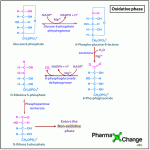
Oxidative Phase:
- This phase starts with the oxidation of glucose 6-phosphate by the enzyme glucose 6-phosphate dehydrogenase to yield 6-phosphoglucono-δ-lactone. This enzyme is an NADP dependent enzyme, where NADP+accepts an electron to form NADPH + H+.
- The product 6-phosphoglucono-δ-lactone then gets hydrolyzed to 6-phosphogluconate by a specific enzyme lactonase
- The product obtained from the previous reaction i.e 6-phosphogluconate gets decarboxylated and oxidized to give D-ribulose 5-phosphate and also NADPH + H+ is produced once more. This reaction was catalyzed by the enzyme 6-phosphogluconate dehydrogenase.
- The final step of the oxidative phase is the conversion of ribulose 5-phosphate to its isomer ribose 5-phosphate by the enzyme phosphopentose isomerase.
This is the end of HMP pathway for many tissues (read below- the use of pentose sugars for the fate of ribose 5-phosphate), while in the others the pathway continues towards the non-oxidative phase. NADPH and ribose 5-phosphate are the end products formed in this phase which play their respective roles further.
Non-Oxidative Phase:
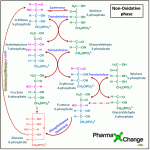
- This phase continues with the isomerisation of ribulose 5-phosphate to xylulose 5-phosphate by the enzyme epimerase and at the same time ribulose 5-phosphate is also converted to ribose 5-phosphate by the enzyme 5-phosphate ketoisomerase.
- In the next step, 7 carbon moiety sedoheptulose 7-phosphate and 3 carbon compound glyceraldehyde 3-phosphate is formed by the transfer of 2 carbon moiety from xylulose 5-phosphate to ribose 5-phosphate in the presence of the enzyme transketolase. The transketolase enzyme requires coenzyme thiamine pyrophosphate (TPP) and Mg2+ ions.
- Now, in the presence of the enzyme transaldolase, a 3 carbon fragment is transferred from sedoheptulose 7-phosphate to glyceraldehyde 3-phosphate to give fructose 6-phosphate (6c) and erythrose 4-phosphate (4C).
- Once again, the enzyme transketolase carries out the transfer of 2 carbon fragment from xylulose 5-phosphate to erythrose 4-phosphate to give fructose 6-phosphate and glyceraldehyde 3-phosphate.
These end products formed are used up in the other metabolic pathways like gylcolysis and Kreb’s cycle to form glucose. The reactions of this phase are readily reversible and hence are a good way of converting hexoses to pentoses when required.
Production of NADPH by Hexose monophosphate pathway
The overall NADPH produced in the reaction for the oxidative phase can be summarized as follows:
Glucose 6-phosphate + 2NADP+ + H2O → Ribose 5-phosphate + CO2 + 2NADPH + H+
NADPH acts as a reducing agent in the body and prevents oxidative stress in cells (read below).
Importance of Hexose Monophosphate pathway (HMP shunt) and NADPH
This pathway is useful for two reasons, for the production of pentoses and NADPH. Both of these products are very essential for the body for utilization in the other metabolic pathways.
- The pentose sugars formed in the HMP shunt from the hexose sugars are used up by the rapidly dividing cells in the body for synthesizing nucleic acids- DNA and RNA and many nucleotides like NADH, ATP, FADH2, CoA etc.
- The other important product formed in the HMP pathway is NADPH which is useful for metabolic pathways like cholesterol synthesis, steroid and lipid production and fatty acid synthesis. Thus signifying that HMP pathway readily takes place in tissues associated with lipogenesis like liver and adipose tissue.
- Certain amino acids are synthesized with the help of NADPH too.
- NADPH in these metabolic pathways is useful in protecting from the harmful free radicals. Harmful free radicals are formed by certain drugs such as primaquine and divicine too. As the lens cells and the RBC’s of the body are always exposed to oxygen, there is always a risk of damage to them by the free radicals (OH– radicals) formed from H2O2 generated from oxygen. During normal process of detoxification in the body, H2O2 gets converted to H2O by the enzyme glutathione peroxidase and in turn reduced glutathione (GSH) gets oxidized. This oxidized glutathione (GSSG) is converted back to its reduced form by NADPH and the enzyme glutathione reductase. NADPH is also helpful because it is required for the conversion of H2O2 to H2O and O2 by the enzyme catalase. NADPH is produced by the oxidative phase of the HMP pathway (as described above) by the enzyme glucose 6-phosphate dehydrogenase. Thus by maintaining a high ratio of NADPH to NADP+ and in turn a high ratio of reduced glutathione to oxidised glutathione and an overall reducing environment, oxidative damage is prevented or reversed.
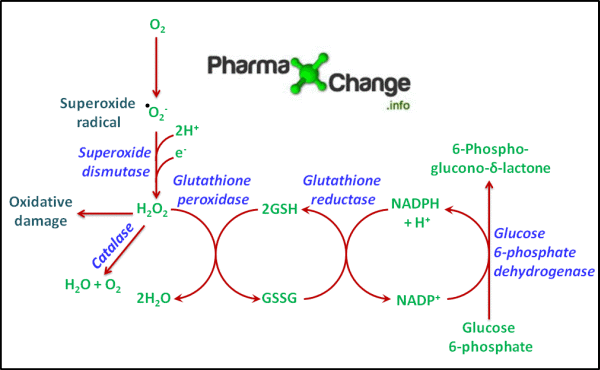
Recommended Texts
- David L. Nelson and Michael M. Cox, Lehninger Principles of Biochemistry 6th Edition
- Jeremy M. Berg, John L. Tymockzo and Luber Stryer, Biochemistry 7th Edition
- Reginald H. Garrett, Charles M. Grisham, Biochemistry by Reginald H Garrett 5th Edition
.
- U. Satyanarayana, U. Chakrapani, Biochemistry by U. Satyanarayana. 3rd Edition.

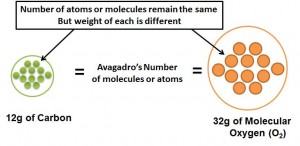
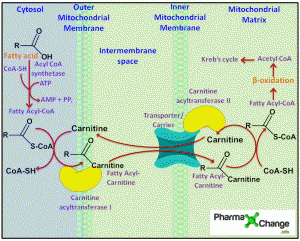

Comment Text* thanks a lot what an easy explanation to understand…
Well explained roles of the pathway in living cells
so easy explain…… good.
well explained
so easy to undrstand